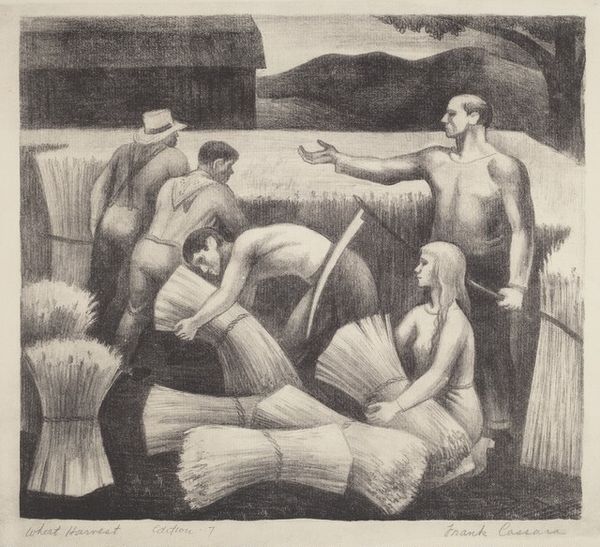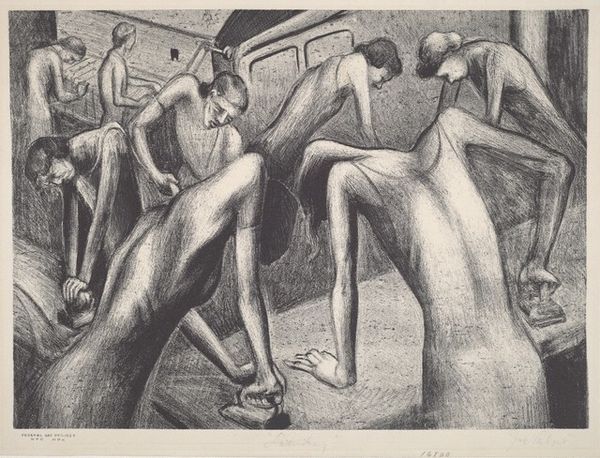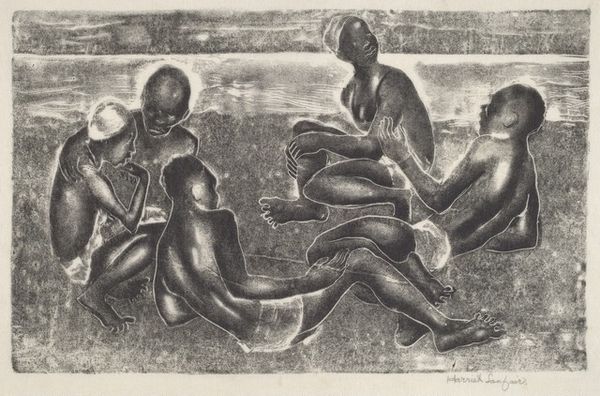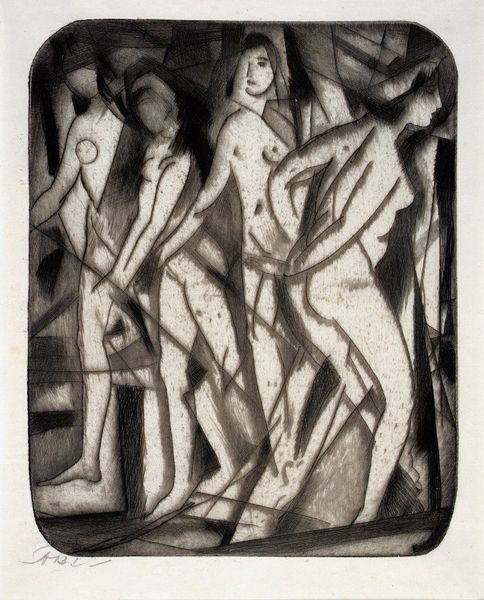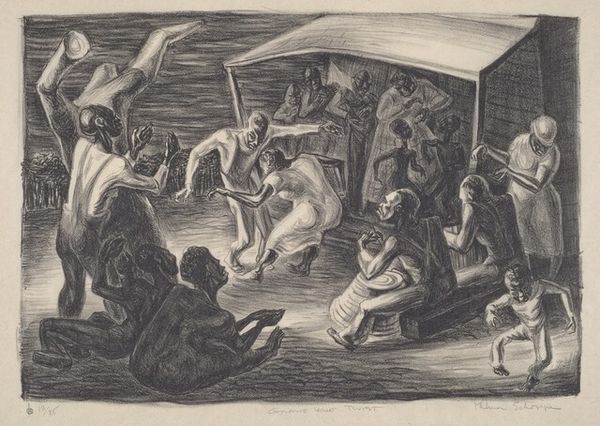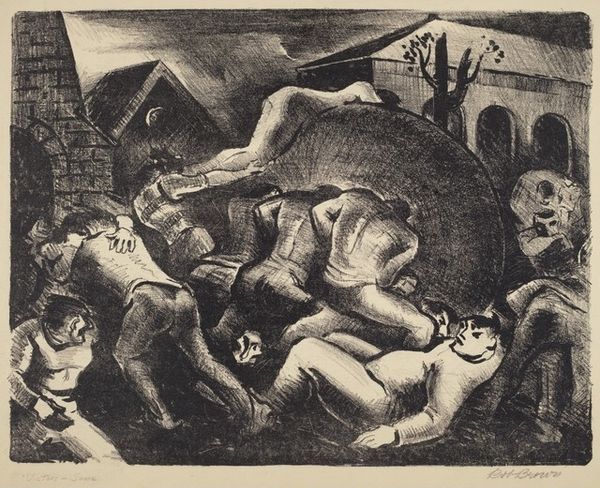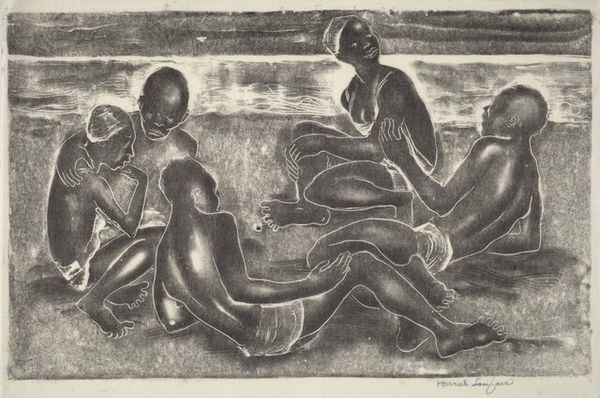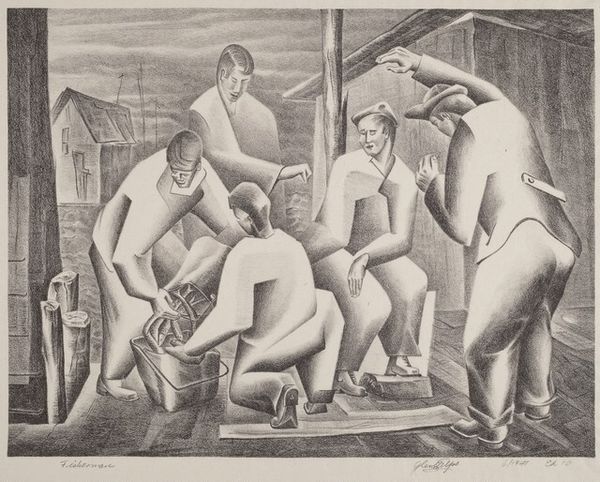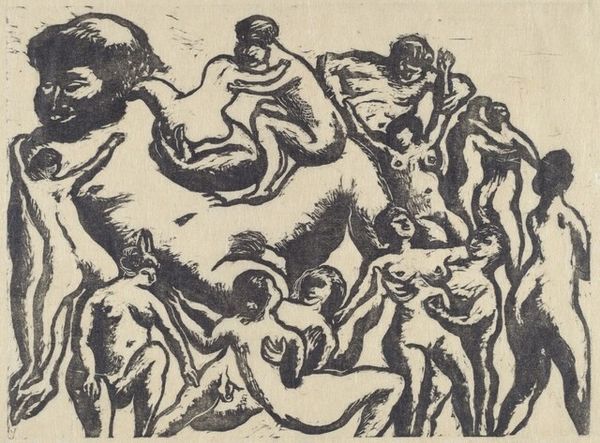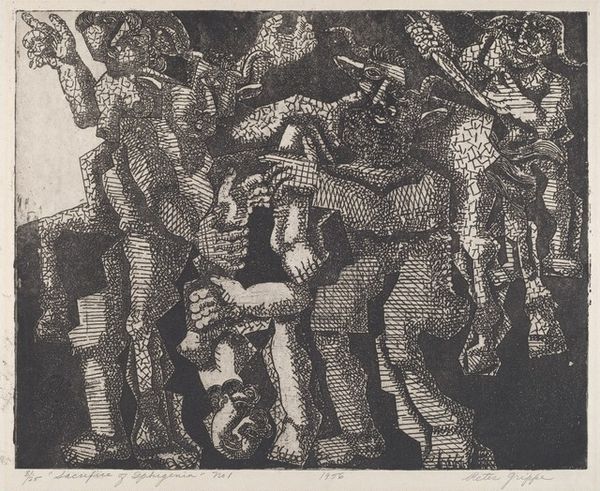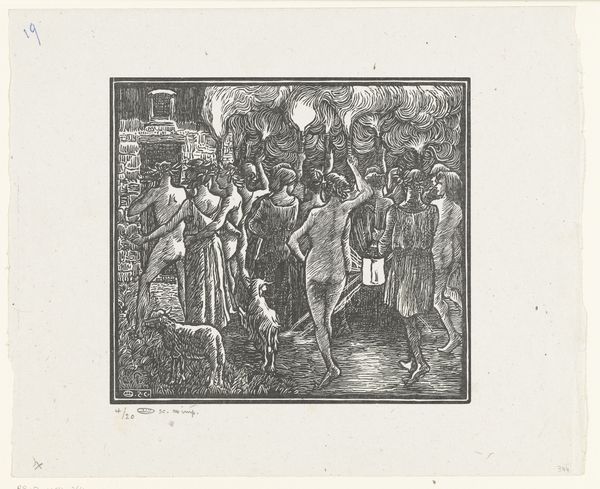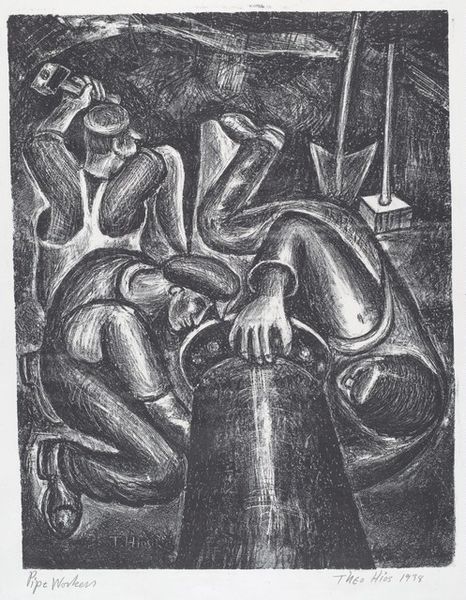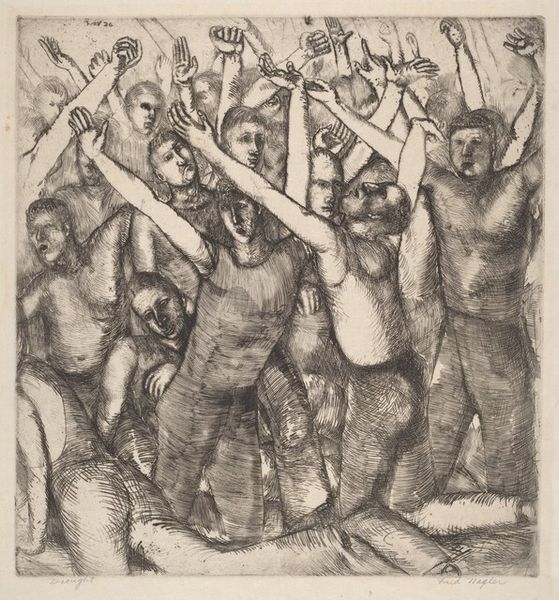
#
pencil drawn
#
facial expression drawing
#
light pencil work
# print
#
pencil sketch
#
charcoal drawing
#
charcoal art
#
portrait reference
#
pencil drawing
#
limited contrast and shading
#
portrait drawing
Dimensions: Image: 315 x 462 mm Sheet: 388 x 570 mm
Copyright: National Gallery of Art: CC0 1.0
Curator: Jan Matulka created "Boat Scene in Central Park" around 1925, rendered in printmaking materials. I find the scene strangely evocative. What stands out to you? Editor: Initially, I'm struck by its nocturnal atmosphere. The bold strokes suggest moonlight filtering through trees, highlighting the figures laboring around the boats. It's romantic, yet also imbued with the realities of labor. Curator: Matulka’s own immigrant experience undoubtedly informs the scene. Think about the public role of Central Park itself – traditionally conceived as a democratic space. Yet the rendering style and subject—working bodies—raises important questions. Whose leisure is being facilitated here? Editor: That's an insightful point. Consider, too, the stylized muscularity of the figures, bordering almost on the heroic. Are we meant to celebrate physical exertion, or does the lack of individual features flatten their identities? It’s like a socialist realist painting, but made through modernist abstraction. Curator: There is a flattening, or better a universalizing of experience here. Matulka may be commenting on the collective nature of labor, or possibly idealizing these working-class individuals, but this could be problematic, since it could render them as mere cogs within an industrial structure. Where do you feel the artwork complicates this? Editor: In the dreamlike background. The inky blacks, and ghostly light introduce a psychological dimension. The figures aren't merely functional; they're inhabiting a space that's also internal. It also draws on feminist readings in order to suggest a world exclusive to men in their labour. Curator: Interesting take on its exclusion. By exploring the social history, reception, and politics surrounding Central Park in the 1920's and beyond, you will unearth a rich and nuanced understanding. It asks what meanings a space holds and who dictates that. Editor: Absolutely, situating “Boat Scene in Central Park” in broader socio-historical discourses deepens its meaning. Thank you! Curator: The pleasure's all mine. I trust our dialogue provided some insightful entry points into this intriguing image.
Comments
No comments
Be the first to comment and join the conversation on the ultimate creative platform.
